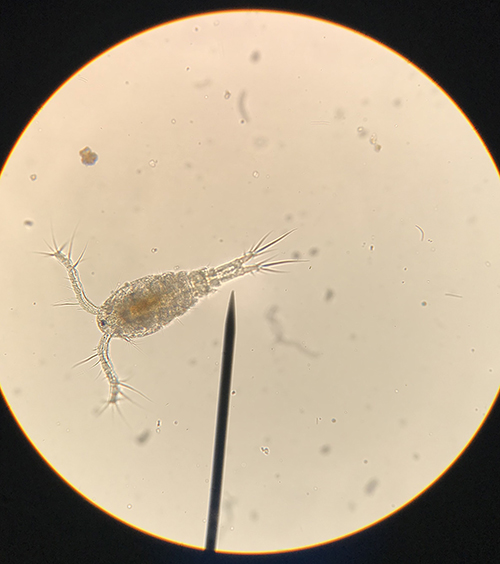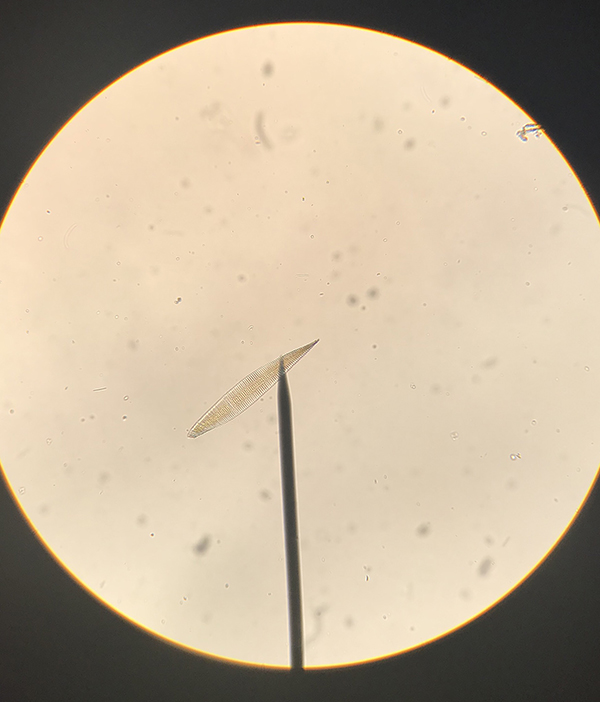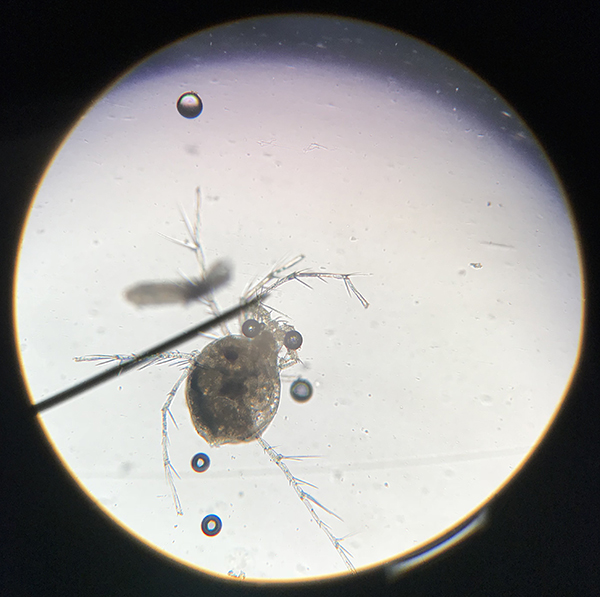An environment teeming with tiny creatures
Lachine Canal National Historic Site
When you think about the plants and animals in the Lachine Canal, chances are these tiny creatures are not the first ones that come to mind. However, there are plenty of them, and they are essential to the ecology of aquatic environments. Most of them are microscopic, but they number in the hundreds of millions and form what are better known as benthos and plankton.
Biology students at the Collégial international Sainte-Anne participated in a project on the shores of Lake Saint-Louis, taking turns sampling these tiny molluscs, crustaceans and other microorganisms in the Lachine Canal.
So what do benthic and planktonic organisms look like under a microscope lens? The students very kindly sent us their samples teeming with tiny creatures living in a world that is completely invisible to us most of the time.

Copepods
These are tiny crustaceans belonging to the copepod family. They are the most abundant multicelled organisms on the planet! Copepods are found in all marine and freshwater environments.There are a number of copepod families. Some of them are pelagic (they live in the water column) and form one of the main components of zooplankton, while others are benthic and live on the sea bottom or buried in sediments. There are also some parasitic copepods (they live on host organisms). Either way, these organisms play an important role in maintaining the ecological balance of aquatic ecosystems. A number of animals feed on them and they help limit the spread of seaweed and bacteria.
Ostracods

Aquarium lovers are familiar with these tiny crustaceans that resemble microscopic mussels. They are called ostracods, and they can be found in most aquatic environments. They belong to one of the most widespread families of crustaceans on the planet!
Since these tiny creatures date back to the Ordovician period, if not the Cambrian (+/- 500 million years ago), they are used in paleontology as an indicator of the environment that existed back then. Today, they also serve as bioindicators in environmental analyses of watercourses. Not bad for an animal that is only 0.5 to 3 mm in size!
Diatoms

This is a diatom. Diatoms are single-celled microalgae that are present in all aquatic environments. Like copepods, diatoms can be pelagic (plankton) or benthic (benthos).
At first glance, diatoms don’t look very impressive. However, what if we told you that these microalgae alone produce one quarter of the oxygen we breathe on Earth? They also play a critical role in the functioning of marine ecosystems, because they form the base of the food webs of a number of species. That should earn them a bit more respect!
Water mites or Hydrachnidiae
Water mites are tiny arachnids also known as Hydrachnidiae. They are abundant in freshwater bodies.

Water mite larvae are parasites that attack invertebrates and the larvae of other insects and aquatic crustaceans. They latch onto the larvae of dragonflies, diving beetles, water bugs and other types of insects. This parasitism appears to play an important role in regulating the populations of various aquatic organisms and insects.
The size of planktonic and benthic populations varies depending with water quality. This makes them an excellent tool for monitoring ecosystem health. It is reassuring to know that they are so plentiful in the Lachine Canal.
Many thanks to the biology students at Collégial international Sainte-Anne for sharing these captivating finds with us.
- Date modified :